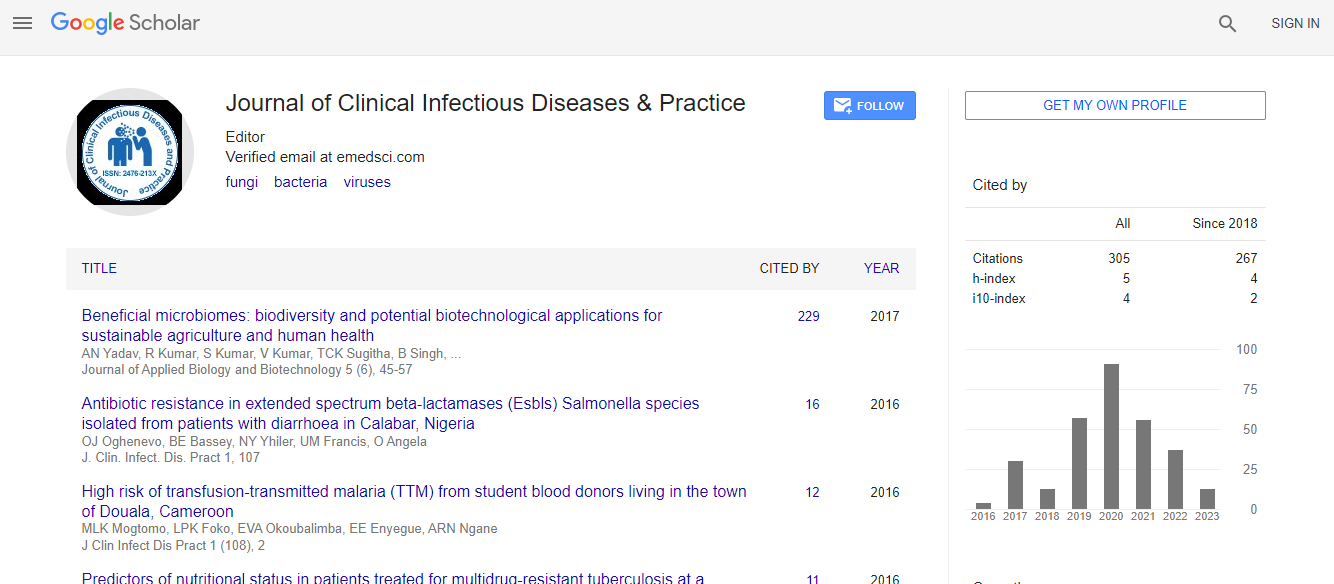The Pathogenesis and Epidemiology of Ebola Virus Disease
*Corresponding Author:Received Date: May 01, 2024 / Published Date: May 29, 2024
Citation: Isabella H (2024) The Pathogenesis and Epidemiology of Ebola Virus Disease. J Clin Infect Dis Pract 9: 240.DOI: 10.4172/2476-213X.1000240
Copyright: © 2024 Isabella H. This is an open-access article distributed under the terms of the Creative Commons Attribution License, which permits unrestricted use, distribution, and reproduction in any medium, provided the original author and source are credited.
Abstract
Ebola Virus Disease (EVD) is a highly lethal infection caused by the Ebola virus, first identified in 1976. The virus is believed to be transmitted from fruit bats to humans and spreads among humans through direct contact with infected bodily fluids. Symptoms range from fever and muscle pain to severe bleeding and organ failure. Early diagnosis is critical for managing outbreaks, with laboratory tests like ELISA and PCR being essential tools. While no specific antiviral treatment is fully approved, supportive care and experimental therapies, including monoclonal antibodies and antivirals, have shown promise. Preventive measures include strict infection control practices and vaccination, notably with the rVSV-ZEBOV vaccine. Major outbreaks, such as the 2014–2016 West Africa outbreaks, highlighted the need for robust global health responses. Continued research, improved healthcare infrastructure, and international cooperation are vital for controlling future outbreaks.

 Spanish
Spanish  Chinese
Chinese  Russian
Russian  German
German  French
French  Japanese
Japanese  Portuguese
Portuguese  Hindi
Hindi 
